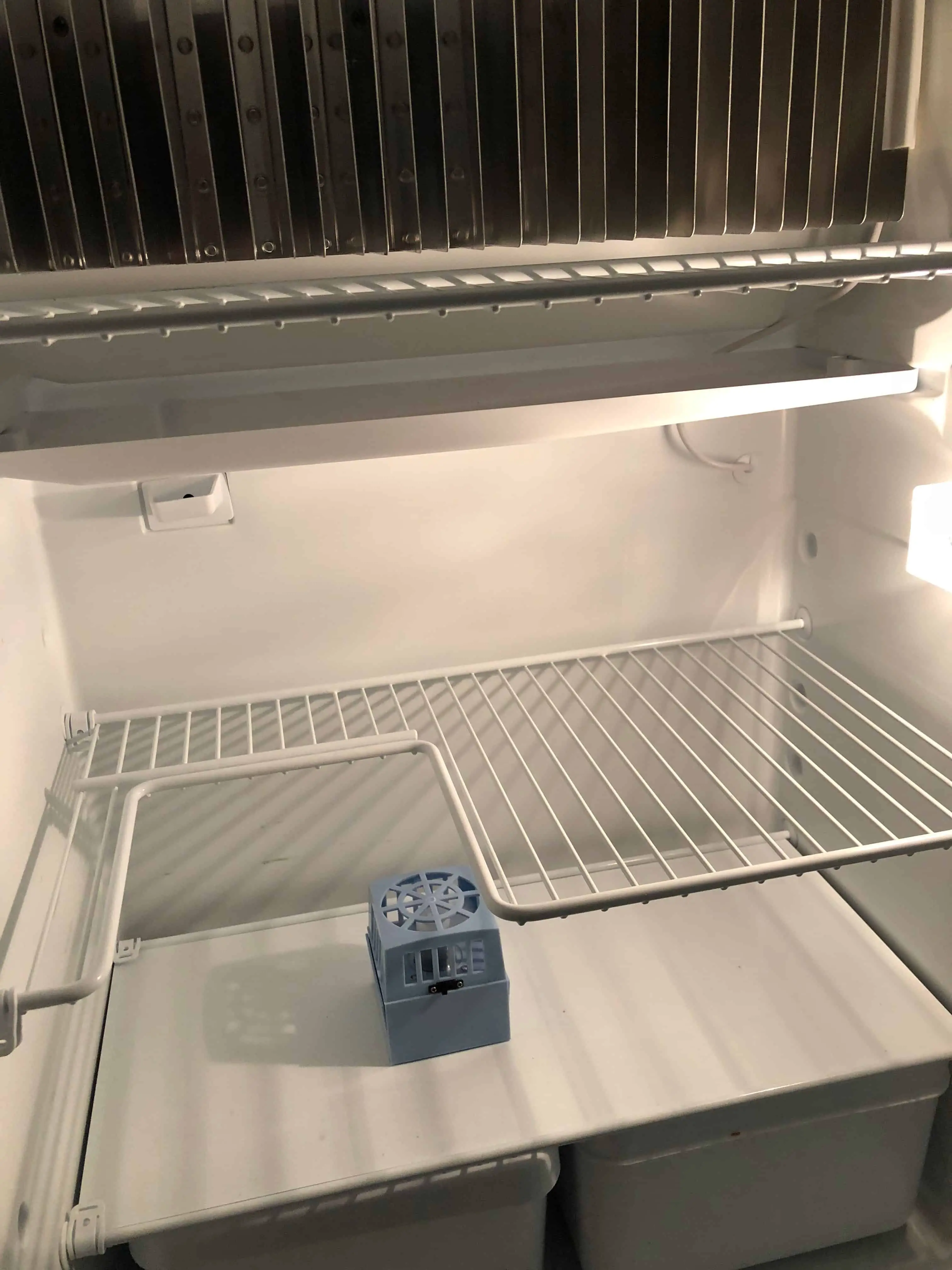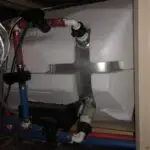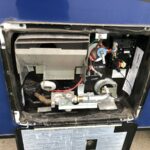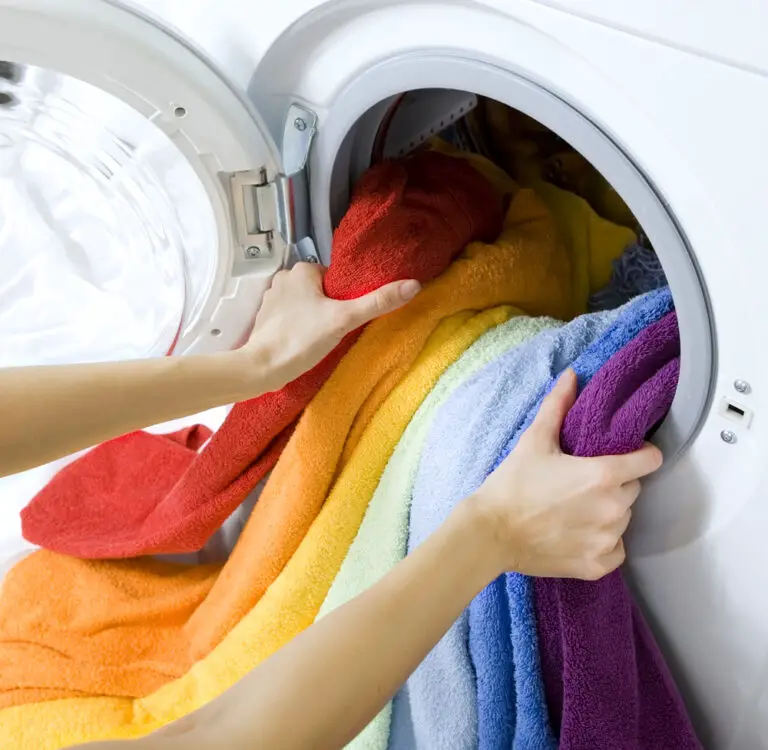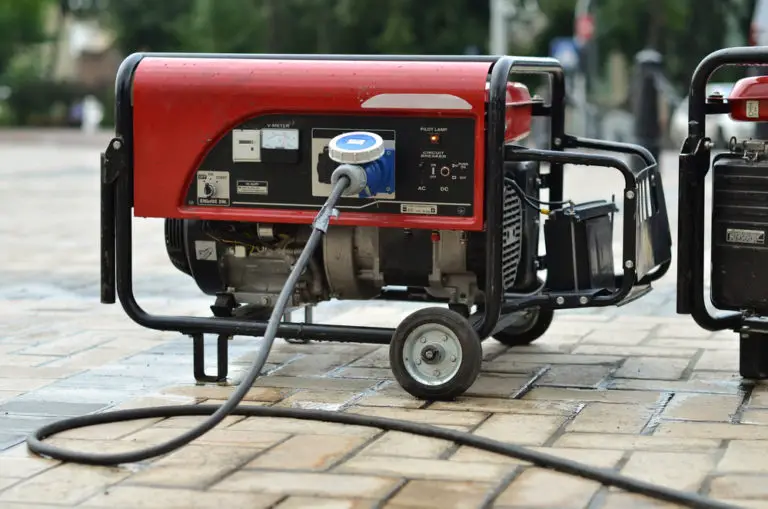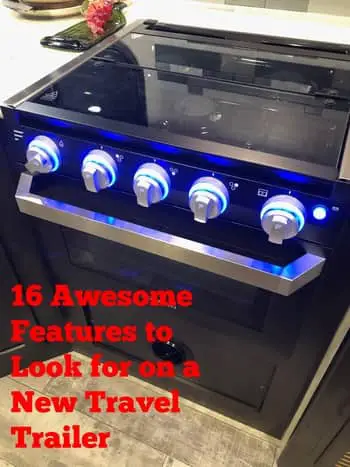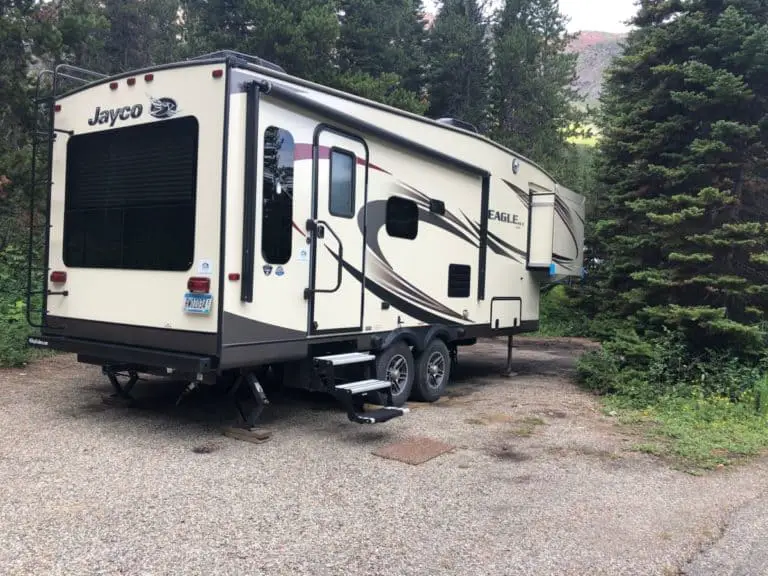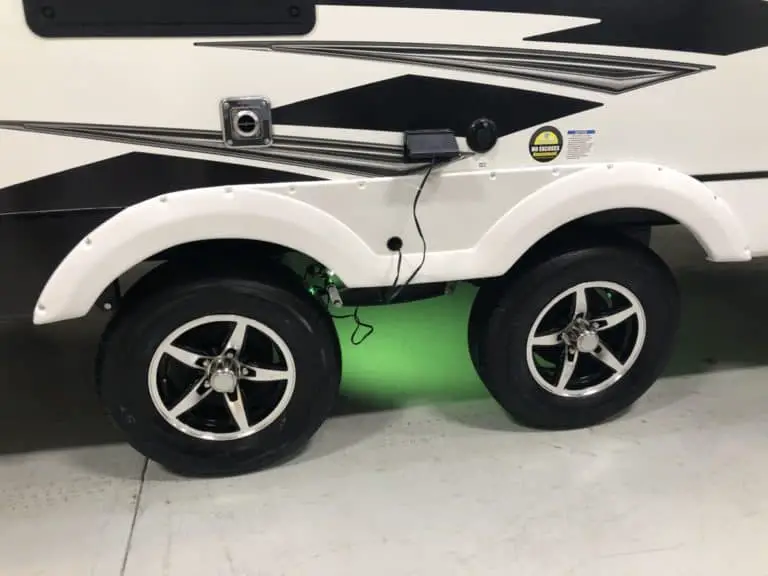How To Test If Your RV Fridge Is Working On Electric?
Most RV fridges are absorption refrigerators designed to run on 12V direct current or 120V alternating current electricity or propane gas heating. The absorption fridge is designed to be able to switch between any of these three supply settings. If your fridge is not working, no display lights will light up inside the fridge or on the front control panel.
To determine whether the electric systems are functional on an RV fridge, a voltmeter (multimeter) is required. If no lights are lit up on the control panel and the breaker switch is on, the multimeter can be used to check whether the 12V and 120V power supply is on at the fridge control panel.
Using only a multimeter, you can troubleshoot the electrical and operational issues on your absorption-type RV refrigerator. Let’s review how these types of fridges operate and how to find and fix problems yourself.
How To See/Test Whether The RV Fridge Is Running On Electrical Power?
Having parked your RV and leveled it out, connect to the external utilities like water, shore power, and sewage, check the main electrical circuit breaker box inside the RV, and ensure that the AC power to the fridge is on. Check whether the indicator lights on the front control panel of the fridge are lit up or whether the light inside the fridge is on.
If no lights are on inside of the fridge or on the front control panel, check whether you have AC shore power power to the other electrical devices such as the microwave or TV. If you confirm the power to the main distribution box, proceed to the outside of the RV and open the external fridge grille.
Look for a yellow powder at the bottom of the condenser which could be ammonia sediment so make sure not to touch it. If you see this yellow residue, your fridge has a broken cooling unit. The cooling unit consists of a sealed, pressurized system that contains water, ammonia, hydrogen gas, and sodium chromate. The sodium chromate is a rust inhibitor and not involved in the cooling cycle.
A smell of ammonia is another sign that the pressurized system has been breached. And lastly, a gurgling sound comingfrom the condenser unit is another sign of a breach. Any of these three signs will require a significant repair of the sealed and pressurized system. Assuming none of these signs are present, check that the RV has been properly leveled. This symptom will be prevelent in both a Dometic fridge as well as other brands.
For the fridge to operate properly, gravity will cause the condensed liquid to run down to the heating reactor again. The fridge must be level to within 3 degrees of plumb. If the system is level, proceed to the electrical checks starting on the AC side.
Troubleshooting and Fixing your RV Fridge that isn’t Working
Unplug the fridge from the outlet and test whether the outlet has 120V AC. Using the multimeter, check that the meter is set to measure AC and connect the black connector of the multimeter to the ground and the red positive connector. You should get a 120V reading at the outlet.
Plug the fridge into the outlet and test whether you can detect 120V AC at the control panel on the fridge. If you get a 120V reading on the multimeter, we know that there is AC power to the fridge. Switch the multimeter to measure DC up to 20V and connect the black to ground and the red test probe to the positive terminal of the 12V DC on the control panel.
If you have a 12 volt DC power reading on the multimeter, you have established power flowing to the fridge control panel for 120V AC and 12V DC. Follow the positive lead from the DC on the control panel to the temperature sensor on the heating chamber of the fridge. The T-sensor has a trip switch that must be on for the system to function.
If you are boondocking, you will need enough battery power to run the fridge, so make sure your batteries are kept up and charged with a generator or solar kit. We currently have this kit for a perminately installed kit and this for a portable kit.
Reset the T-sensor trip switch if it has been triggered. If the fridge is still not working even though we have established 120V AC and 12V DC present at the control board, the fault may be at the lower control board located at the fridge cooling system or above the fridge door.
Use the multimeter to establish that there is power on the lower control board. Check both the AC and DC fuses to ensure that they are intact. If there are still no lights inside the fridge or on the front control panel, then the front control panel may be defective and must be replaced.
If you can establish that your fridge is getting 12 volt power and is an absorption refrigerator, make sure your propane is turned on and that you have enough gas in the lines to run the fridge. Sometimes you may need to bleed the lines by turning your stove on to get gas through quickly.
Signs that the cooling system is leaking or that the top or bottom control panels are defective will render the RV fridge useless until these components can be replaced or repaired. Most often, the fridge will function once the T-sensor trip switch has been reset again. You should test your RV fridge before leaving for a weekend adventure to ensure it functions properly and does not require repair or replacement of the control panels or sealed cooling system.
If you are in a pinch and about to go on a camping trip, you can always pick up some blocks of ice to keep it cold in the fridge or you can always revert to coolers as a back up.
How Does A RV Absorption Fridge Function On Electrical Power or Propane Gas?
In absorption refrigeration, heat is absorbed from the interior of the refrigerator. The absence of heat will result in the interior space being cold. There are no moving parts in an absorption refrigerator. A sealed and pressurized system has a boiler that contains liquid water, ammonia, hydrogen, and sodium chromate and is heated by either a propane flame or an electrical heating element (AC and DC).
The cooling process is based on the laws of physics. All four of the chemical compounds in the pressurized system make the fridge function properly. The sodium chromate prevents the aluminum-based system from corrosion. As the heating element or propane flame heats the liquid in the reactor, the ammonia and water will vaporize and rise in the tube as a gas.
The water will condense to a liquid as it travels up the tube and returns to the condenser, recombining it with liquid ammonia on the other end of the system. The ammonia gas will continue up the system to a condenser outside the fridge, where the heat is dissipated, and the ammonia becomes a liquid again.
The liquid ammonia will flow into the fridge, where it combines chemically with the hydrogen gas and causes a rapid cooling as the heat is absorbed from the inside of the fridge and causes the ammonia to become a gas again, which absorbs more heat before returning to recombine with the condensed water and flows back into the reactor unit.
The system is different from household refrigerators in that it does not have a motor that provides the pressure to condense the refrigerant gas. The system relies on the columns being perfectly perpendicular so that gravity will be most effective in pulling the liquid solution down to the heating reactor again.
Conclusion
The most common refrigerators installed in RVs are absorption-type cooling systems that must be perpendicular and heated by a propane flame or electrical AC or DC heating elements.
Now days it is common to see a strictly 12 volt operated fridge with a compressor. These are less cost, and are great unless you are boondocking for periods of time as they will eat up your batteries without a generator or solar kit.
A light inside the fridge or on the front control panel will easily indicate that the fridge is operating on electrical power. If these lights are not on, but the electrical supply from the 120V AC or the 12V DC is verified utilizing a multimeter, then the most common cause is that the temperature sensor has tripped and must be reset.
Failures on the top or bottom electrical control boards or a leak in the pressurized cooling system will require more extensive repairs or replacement and will not be possible when already boon-docked. Check the RV fridge and other systems before departing for your adventure. Happy Camping!
Be the first to be notified about FREE tips, hints, coupon codes, and email-exclusive information. All for FREE!


